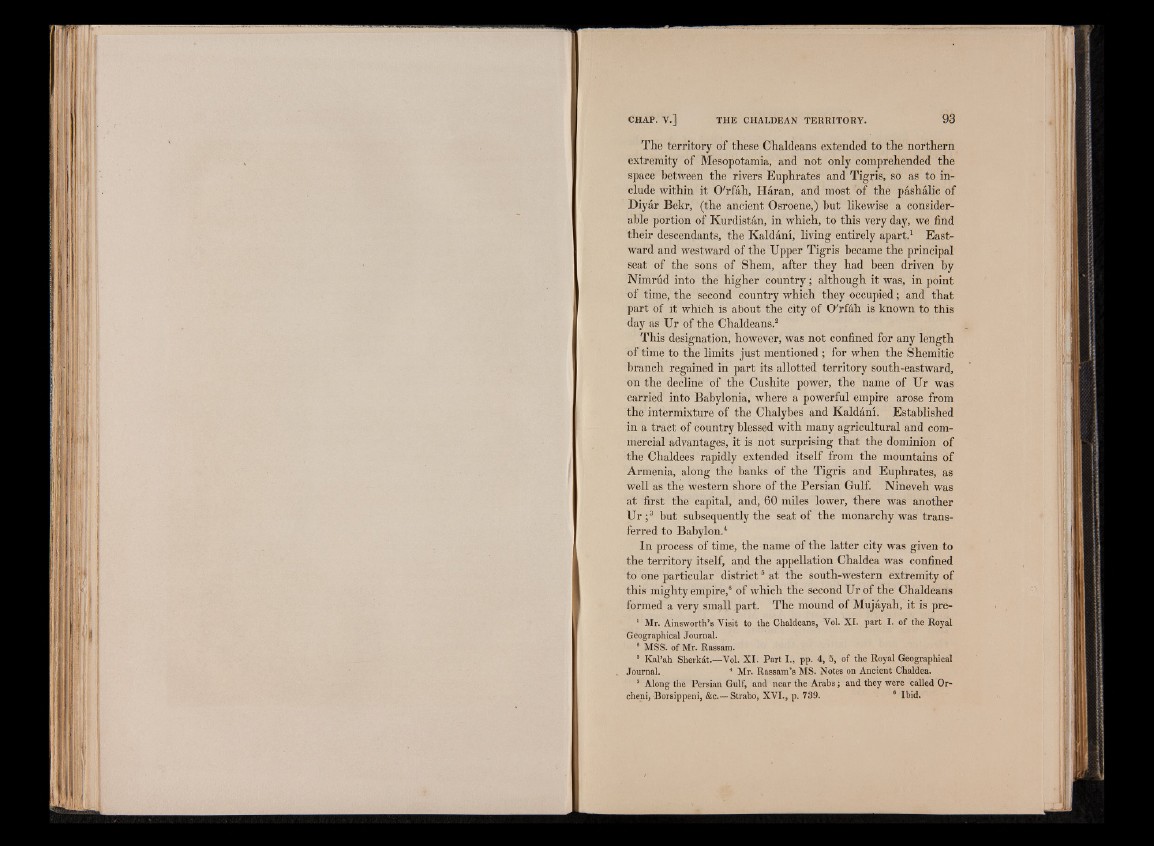
IB
I
¡1
The territory of these Chaldeans extended to the northern
extremity of Mesopotamia, and not only comprehended the
space between the rivers Euphrates and Tigris, so as to include
within it O'rfah, Haran, and most of the pashalic of
Diyar Bekr, (the ancient Osroene,) but likewise a considerable
portion of Kurdistan, in which, to this very day, we find
their descendants, the Kaldani, living entirely apart.1 Eastward
and westward of the Upper Tigris became the principal
seat of the sons of Shem, after they had been driven by
Nimrud into the higher country; although it was, in point
of time, the second country which they occupied; and that
part of it which is about the city of O'rfah is known to this
day as Ur of the Chaldeans.2
This designation, however, was not confined for any length
of time to the limits just mentioned ; for when the Shemitic
branch regained in part its allotted territory south-eastward,
on the decline of the Cushite power, the name of Ur was
carried into Babylonia, where a powerful empire arose from
the intermixture of the Chalybes and Kaldani. Established
in a tract of country blessed with many agricultural and commercial
advantages, it is not surprising that the dominion of
the Chaldees rapidly extended itself from the mountains of
Armenia, along the banks of the Tigris and Euphrates, as
well as the western shore of the Persian Gulf. Nineveh was
at first the capital, and, 60 miles lower, there was another
Ur ;3 but subsequently the seat of the monarchy was transferred
to Babylon.4
In process of time, the name of the latter city was given to
the territory itself, and the appellation Chaldea was confined
to one particular district5 at the south-western extremity of
this mighty empire,6 of which the second Ur of the Chaldeans
formed a very small part. The mound of Mujayah, it is pre-
1 Mr. Ainsworth’s Visit to the Chaldeans, Vol. XI. part I. of the Royal
Geographical Journal.
s MSS. of Mr. Rassam.
8 Kal’ah Sherkdt.—Vol. XI. Part I., pp. 4, 5, of the Royal Geographical
Journal. 4 Mr. Rassam’s MS. Notes on Ancient Chaldea.
5 Along the Persian Gulf, and near the Arahs; and they were called Or-
cheni, Borsippeni, &c.— Strabo, XVI., p. 739. * Ibid.